 |
 |
 |
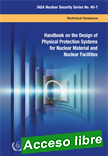 |
Handbook on the Design of Physical Protection Systems for Nuclear Material and Nuclear Facilitie
IAEA ¦ Nuclear Security Series ¦ No. 40-T ¦ 2021 ¦ 183 pages
This publication provides comprehensive detailed guidance for States, competent authorities and operators on how to implement the recommendations and implementing guidance of existing IAEA Nuclear Security Series publications for an effective physical protection system (PPS) for nuclear facilities and nuclear materials in use and storage.
|
. It provides further technical detail on how to design and evaluate a PPS, with respect to the selection and integration of appropriate, effective physical protection measures (including equipment). The publication is intended to serve as a general reference, pointing users to other complementary guidance on specific topics.
|
 |
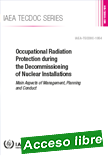 |
Occupational Radiation Protection during the Decommissioning of Nuclear Installations: Main Aspects of Management, Planning and Conduct
IAEA ¦ ITECDOC-1954 ¦ Date published: 2021 ¦ 62 pages ¦ 14 figures
This publication presents practical information on occupational radiation protection and examples with good practices from the nuclear industry on how to comply with the requirements established in IAEA Safety Standards Series No. GSR Part 3, Radiation Protection and Safety of Radiation Sources: International Basic Safety Standards, within the context of decommissioning activities.
|
Taking account of the fact that over 70% of the world's nuclear reactors are to be decommissioned by 2040, this publication can be used in the planning of new decommissioning projects and for improvements in the implementation of existing decommissioning projects. Useful input for licensing and supervision of decommissioning projects are also provided.
|
 |
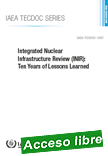 |
Integrated Nuclear Infrastructure Review (INIR): Ten Years of Lessons Learned
IAEA ¦ ITECDOC-1947 ¦ Date published: 2021 ¦ 44 pages ¦ 3 figures
The Integrated Nuclear Infrastructure Review (INIR) service, launched by the IAEA in 2009, was designed to support the evaluation of the infrastructure for the introduction of a nuclear power programme. An INIR mission is conducted upon Member States request and it enables countries to identify areas of infrastructure development where further attention is needed.
|
The INIR mission also identifies good practices to be shared with other Member States. In addition, it provides an opportunity for the exchange of information between local experts and a team of IAEA and international experts on their experiences. This publication is intended to provide information and analysis on the main results of INIR missions and to share lessons learned. The publication also explains the recent developments in the INIR process and the mechanisms to support Member States after an INIR mission is conducted.
|
 |
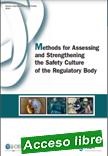 |
Methods for Assessing and Strengthening the Safety Culture of the Regulatory Body
OECD - Nuclear Energy Agency ¦ NEA No. 7535 ¦ 2021 ¦ 108 pages
This report further explores some of the key elements presented in The Safety Culture of an Effective Regulatory Body (2016), commonly known as the NEA Green Booklet, and provides both an overview and practical information on the methods and tools used by regulatory bodies to assess their own safety culture and to build safety culture competence and awareness.
|
The NEA encourages regulatory bodies to use this report as a reference for reviewing and improving their activities to foster and enhance a healthy safety culture. Finally, the report proposes ten conclusions to inspire managers to develop and sustain efforts to maintain a healthy safety culture within the regulatory body.
|
 |
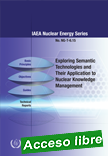 |
Exploring Semantic Technologies and Their Application to Nuclear Knowledge Management
IAEA ¦ STI/PUB/1899 ¦ Date published: 2021 ¦ 62 pages
Within the nuclear field, a vast body of knowledge, involving scientific, technical and managerial fields, is distributed among many organizations of different types. Managing and provisioning distributed knowledge is therefore becoming one of the major challenges in federated organizational environments. This publication provides information to organizations dealing with nuclear knowledge and its management.
|
It covers an introduction to semantic information technologies, the Worldwide Web standards developed for interoperability, the construction of knowledge bases on the basis of distributed knowledge, and the development of knowledge driven applications. In addition to providing insight into the development of distributed knowledge bases, the intent of this publication is to provide examples of applications of semantic technologies specifically in the nuclear field.
|
 |
 |
Approaches for Modelling of Radioecological Data to Identify Key Radionuclides and Associated Parameter Values for Human and Wildlife Exposure Assessments
IAEA ¦ ITECDOC-1950 ¦ Date published: 2021 ¦ 80 pages ¦ 14 figures
This publication was produced as part of the Working Group 4 of the IAEA Modelling and Data for Radiological Impact Assessments (MODARIA) programme, which focused on the analysis of radioecological data in IAEA Technical Reports Series publications to identify key radionuclides and associated parameter values for human and wildlife exposure assessment.
|
The intent is to reduce uncertainties and to develop new approaches to strengthen the evaluation of the radiological impact to the public, as well as to flora and fauna, arising from radionuclides in the environment. The publication comprises two main sections. The first one considers prioritization approaches to identify the radionuclides and pathways that potentially contribute most to internal and external exposure to organisms in wildlife groups for different sources and exposure situations. The focus of the second section is the improvement of transfer parameter values for animal product data, namely cow and goat milk. Milk was selected as it often has a high priority in radiological environmental impact assessment. Examples of approaches that can be used to identify potentially important data gaps, illustrated using case studies are also presented. This publication is intended to provide Member States with technical information and data that can be used by their national authorities to develop and improve their models and approaches for radiological environmental impact assessment for facilities and activities.
|
 |
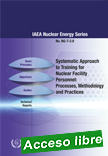 |
Systematic Approach to Training for Nuclear Facility Personnel: Processes, Methodology and Practices
IAEA ¦ STI/PUB/1909 ¦ Date published: 2021 ¦ 171 pages ¦ 25 figures
Training is an important tool to achieve and maintain the required competence of personnel working in nuclear facilities. Effective training and qualification of personnel are necessary for the achievement of high safety and efficiency standards in nuclear facility performance. Training and qualification combined is a key feature of the integrated management systems of nuclear facilities.
|
It is these considerations that led to this publication which consolidates the experience gained worldwide using the systematic approach to training (SAT) for nuclear facility personnel. It provides a basis for establishing and sustaining the quality and reliability of training and qualification for all main categories of nuclear facility personnel. SAT has proved its effectiveness in nuclear and other safety critical industries over decades and is recognized as the best international practice in nuclear training. The publication details the processes and methodology, presents good practices and offers recommendations from the experts in the field on the entire set of activities within the SAT–based training methodology and provides examples of SAT application. It builds on, and supersedes, guidance provided in an earlier IAEA publication (Technical Report Series 380, Nuclear Power Plant Personnel Training and its Evaluation: A Guidebook). A key feature of this publication is demonstrating how SAT–based training serves as one of the important processes in a nuclear facility management system and how it integrates with other processes.
|
 |
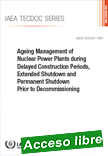 |
Ageing Management of Nuclear Power Plants during Delayed Construction Periods, Extended Shutdown and Permanent Shutdown Prior to Decommissioning
IAEA ¦ ITECDOC-1957 ¦ Date published: 2021 ¦ 126 pages ¦ 10 figures
As part of the IAEA programme on International Generic Ageing Lessons Learned (IGALL), this publication provides a summarized description of internationally accepted practices. Examples of the national approaches to ageing management for the specific periods of extended shutdown, delayed construction and post final shutdown as applied in the nuclear power plants of participating IGALL Member States are presented.
|
In addition, some of the information is also applicable for the evaluation of ageing effects prior to and after restarting operation. The publication complements existing IAEA publications on ageing management approaches of Member States during normal operation and is intended for use by regulatory bodies, operating organizations, manufacturers, designers and technical support organizations.
|
 |
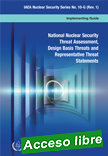 |
National Nuclear Security Threat Assessment, Design Basis Threats and Representative Threat Statements
IAEA Nuclear Security Series No. 10-G ¦ STI/PUB/1926 ¦ Date published: 2021 ¦ 39 pages
The identification and assessment of threats provides an essential basis for the selection, design, and implementation of nuclear security measures. For nuclear material and other radioactive material that is under regulatory control, and associated facilities and activities, the results of this identification and assessment are expressed as a design basis threat or representative threat statement describing the intentions and capabilities of potential adversaries against which the materials and associated facilities and activities are to be protected.
|
An Implementing Guide was issued in 2009 under the title of Development, Use and Maintenance of the Design Basis Threat which was updated and revised. The result of this revision is the current publication. It provides a step-by-step methodology for conducting a national nuclear security threat assessment including both physical and computer security aspects, and for the development, use and maintenance of design basis threats and representative threat statements.
|
 |
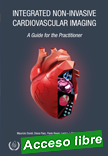 |
Integrated Non-Invasive Cardiovascular Imaging: A Guide for the Practitioner
IAEA ¦ STI/PUB/1931 ¦ 2021 ¦ 258 pages ¦ 77 figures
Integrated cardiovascular imaging is the optimal use of multiple imaging modalities to obtain complementary information about cardiac diseases, to aid in diagnosis, determine aetiology and prognosis, with the ultimate objective of effectively guiding clinical decision making. Over the past few decades, advances in technology have contributed to the development of new imaging modalities and refinement of existing ones, leading to major improvements in the accuracy of diagnosing cardiovascular disease.
|
While modality-centric expertise has been the primary driver of improvements in each modality, this has also contributed to imagers working in silos resulting with limited inter-modality coordination and collation of information relevant for patient care. This publication provides comprehensive guidance on the rationale and implementation of integrated cardiovascular imaging for practitioners
|
 |
| |
|
|

|
|
|
| |
|
|
| |
| |
|
|
| |
| |
|
|
| |
| |
|
|
|
| |
| |
